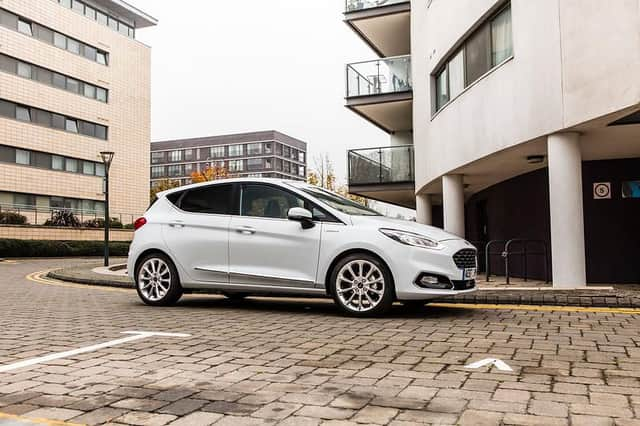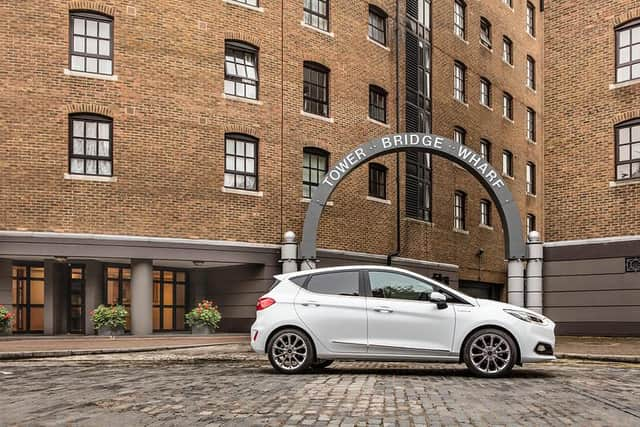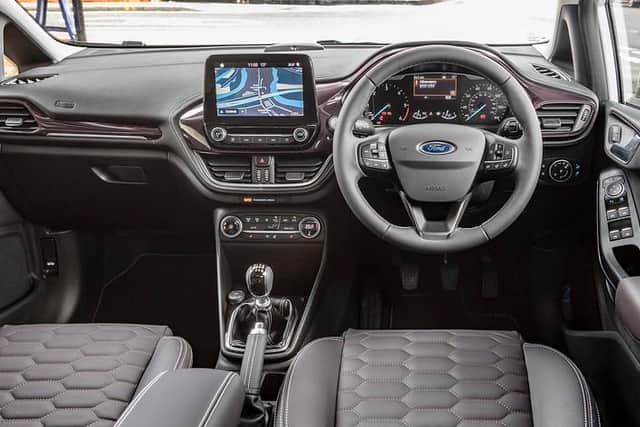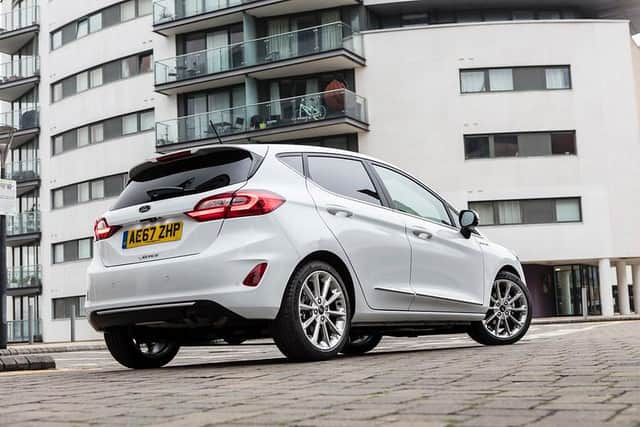2020 Ford Fiesta Vignale review - big car refinement, for big bucks


Compact, great to drive and with a broad range of trims at price points to suit varying budgets - there’s a reason the Ford Fiesta has been the top selling car in the UK for the last 11 consecutive years.
At a price to suit bigger budgets than mine, sits the Ford Fiesta Vignale. Starting at £22,290 (in actual fact, our test car cost £23,470 with options) the Vignale model tops the Fiesta line-up, excluding the high-performance Fiesta ST, and sets out to give buyers high-end materials, premium levels of equipment and ‘big car’ refinement.
Advertisement
Hide AdAdvertisement
Hide AdWith a starting price significantly exceeding that of entry-level Audi A1 and Mini Cooper models, does the high-specification Ford do enough to justify its premium price tag?


Premium materials and equipment
In general, the interior of the current generation Fiesta is of a decent standard to start with, the dated, angular dash of the old model is gone, replaced by a more elegant layout and an eight-inch touchscreen infotainment system.
Vignale models add “Black Ruby” leather heated seats, a leather steering wheel, custom threshold plates, mats and a 10-speaker Bang and Olufson sound system to the interior.
The Vignale trim materials are well selected and, while there are still a few hollow-sounding and scratchy fixtures around the cabin, by and large it feels like Ford has achieved its aspiration of a premium feel.


Driving the Fiesta Vignale
Vignale cars have a comfort-oriented suspension setup compared with ST-Line and ST models. There’s a little bit more body roll, but the benefits of softer springs, thicker tyres and a slightly higher ride outweigh the cons in terms of comfort.
Vignale models, like Zetec and Titanium models that are tuned the same way, ride better than the sportier ST-Line and ST cars, particularly around the city, but the steering remains sharp and well balanced.
The 1.0-litre EcoBoost engine powering much of the Ford line-up is a cracker. The 125PS (123bhp) version that powered our test car isn’t quite as much fun as the 140, but it’s still free-revving, makes a great noise and is a great match for the precise-shifting six-speed manual gearbox.


The 10-second nought to 62mph time doesn’t put this Fiesta in hot, or even warm, hatch territory but nor does it feel sluggish. On the motorway it was comfortable enough and cruising North on the A9 during our test I had to be mindful of the average speed cameras, the engine very much eager to give more in sixth gear on two-lane stretches.
Practicality
Advertisement
Hide AdAdvertisement
Hide AdModern dash layouts tend to be far less cluttered than those of a few years ago thanks to controls now being accessed via touchscreen interfaces. The Fiesta is no exception. The interface itself is easy to reach and, while it protrudes from the dashboard, doesn’t interfere with your view of the road.
Space for the driver and front passenger is good, but in other areas the car feels surprisingly cramped. The 292-litre boot in both three and five-door models lags some way beyond competitors in the class. The new Renault Clio has a 395-litre boot, for example.
Leg room in the rear is fairly typical of the supermini class, but headroom is affected by the panoramic sunroof in the Vignale model. Most primary school-aged kids will be fine in the back, but the bulkier car seats recommended for pre-schoolers, toddlers and babies are a squeeze behind even an average-sized driver due to the shape and angle of the front seat backs.
Verdict
The Fiesta is great looking and great to drive, but the question with the Vignale model has always been whether buyers will be prepared to part with premium cash for a Ford supermini.
While you can get the premium-badged Audi A1 for around £18k, if you spec it up with similar levels of equipment to the Vignale and you’ll be looking at closer to £29k for the top tier Audi A1 Vorsprung and the 1.0-litre TFSi engine.
When you consider that, £23k for the Fiesta starts to make a bit more sense in comparison. Ford will be hoping that buyers see the value proposition in that big car asking price.
The thing that’s propelled the Fiesta to the top of the best seller lists though, is how great it is to drive. You can experience that, plus respectable levels of equipment for considerably less money if you opt for a Titanium or ST-Line model.
Ford Fiesta Vignale
Price: £22,290 (£23,470 as tested)
Engine: 1.0-litre, three-cylinder, turbo, petrol
Power: 123bhp
Torque: 125lb/ft
Transmission: Six-speed manual
Top speed: 121mph
0-62mph: 10 seconds
Economy: 46.3-49.6mpg
CO2 emissions: 108-112g/km